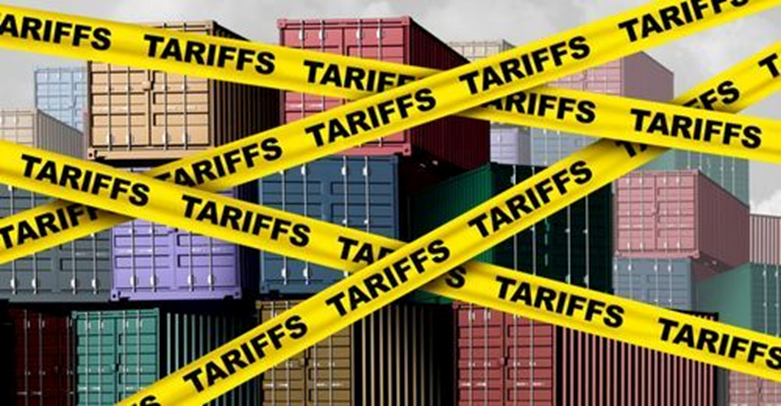On April 2, 2025, President Donald Trump proposed a sweeping set of tariffs on imports from more than 90 countries. These new measures—stacked atop previously announced 10% tariffs on all U.S. imports—are already prompting shifts across the commercial real estate (CRE) landscape. Hillis Properties sees significant implications, both risks and opportunities, for construction costs, leasing trends, and investor strategy as trade uncertainty filters through to real estate.
The impacts are expected to vary by asset class and market, and while the future is far from certain, one thing is clear: CRE stakeholders must prepare for dynamic conditions ahead. Below, we outline how different property types are being affected and what investors, brokers, and developers should watch—and do—now.
Industrial Real Estate: Disruption Today, Potential Expansion Tomorrow
Hillis Properties expects the industrial sector to face near-term disruption with longer-term potential upside. Tariffs on materials like steel and aluminum have already increased warehouse construction costs by up to 10%. Steel prices alone rose 20% this spring. That pressure is slowing speculative development and triggering underwriting revisions – factors likely to drive up current rents and valuations for existing assets, benefitingexisting owners.
Leasing activity near major ports is cooling as import-heavy tenants wait for policy clarity. But at the same time, a shift toward domestic manufacturing could unlock new demand in industrial corridors especially in lower-cost, infrastructure-ready secondary markets.
Conversely, Crexi’s CRE platform shows rising investor interest (based on search behavior) in metros like Detroit (+31%), Houston (+17%), and Miami (+19%), where users are increasingly searching for industrial properties aligned with reshoring narratives. Persistent tariffs would increase demand for domestic logistics and production facilities, particularly in markets with favorable infrastructure and access to labor. Long-tail, this could also drive interest in secondary industrial markets where land is cheaper and development barriers are lower.
Multifamily Housing: Undersupply Could Get Worse
Hillis Properties sees tariffs compounding the U.S. housing undersupply problem. Elevated costs for lumber and wiring are making new development less viable, especially in high-need areas. This could prolong the existing supply gap, intensifying upward rent pressure.
For owners of stabilized assets, this is likely a net positive. Limited new supply supports rent growth and asset appreciation, particularly in high-barrier metros. Still, the affordability gap is widening, a growing concern for policymakers and tenants alike, especially those in lower-income urban markets.
Office and Retail: Caution in a Cloudy Economic Environment
Hillis Properties expects caution in office and retail as macroeconomic uncertainty clouds corporate and consumer outlooks. Many tenants are pausing office expansions or lease renewals, waiting for more economic clarity. Weak business confidence often translates into slower leasing and fewer long-term commitments. However, Blackstone made its first office acquisition in NYC just a few months ago and Google recently ordered its workers back to the office, signaling a light at the end of the tunnel for the sector that’s relatively unimpacted by tariffs.
Retail is more nuanced. On one hand, tariffs may squeeze margins for tenants dependent on imports. Small businesses, especially those that rely on off-shore imports, are facing mounting pressures and limited product supply – most recently, major retailer executives have influenced the Trump administration’s stance on imports, warning of empty shelves. On the other, necessity-based retail—including grocers and service-oriented strip centers—shows consistent resilience.
We’ve observed a slight decline in national retail property searches, but strong activity persists in subtypes like medical retail and neighborhood centers. Blackstone and other major institutional players are taking a cautious stance and adjusting underwriting to account for higher costs, longer project timelines, and potential consumer pullback.
Investment Climate: Flight to Safety and Potential Policy Reactions
In times of uncertainty, we see capital shifting toward hard assets with reliable income. If tariffs weaken GDP and lead to recessionary pressure, the Federal Reserve may respond by cutting interest rates, creating favorable borrowing conditions for CRE.
High-quality, cash-flowing properties with strong tenancy could attract flight-to-safety capital, especially in Multifamily and Industrial. However, investor behavior will depend heavily on how inflation and interest rates evolve alongside tariff implementation.
Real estate’s value proposition lies in its physicality: buildings can be touched, leased, and modeled more predictably than volatile financial assets.
What to Watch: Metrics and Policy Signals
To track the impact of tariffs on CRE, stakeholders should monitor:
- Construction starts and permits (Census Bureau, Dodge Data)
- Port activity and cargo volumes (Port authorities)
- Industrial leasing velocity (brokerage firm research)
- Changes in materials pricing (Producer Price Index, BLS)
- Federal Reserve commentary on rates and inflation outlook
- Stock market
CRE owners should also be engaged in ongoing conversations with their brokerage team, asking questions including the following to gain a clearer understanding of property-specific details:
- Which tenants in this property are most exposed to tariff-related risk?
- How are current construction timelines and costs being affected in this market?
- Are you seeing cap rate adjustments for deals in this asset class due to trade uncertainty?
- What alternative markets are showing strong interest from investors right now?
- Can we include protective language in the PSA in case conditions worsen?

